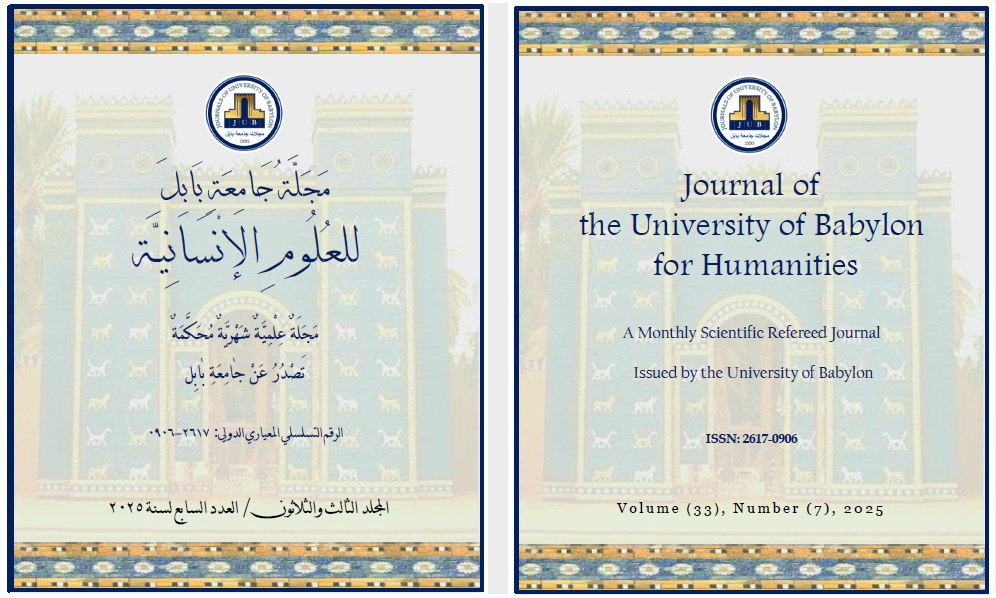The Marginalized in the Novel "The Daughters of Gha’ib Tua’ma Farhan" by Khadir Falih Al-Zaidi: A Cultural Reading
Main Article Content
Abstract
There is a way to engage narrative discourse, with its various designations and components, as narratives attempt, using various tools, procedural or performative, to control it and monitor its transformations within a general theoretical framework. The specificity of the narrative engagement in "The Daughters of Gha’ib Tua’ma Farhan" lies in reading the margin and the unspoken within the framework of a narrative experience of the absurd, hoping to restore Baghdad to its glory and palm trees, which Farman abandoned after its people and loved ones abandoned it. The research space is divided into the metanarrative, the marginalization space suffered by its characters, and the crisis of the Iraqi intellectual, luring events and wandering through the difficult labyrinths of the Iraqi situation. The margin becomes the true narrative body in a personal experience through which Al-Zaidi attempts to engage the intellectual in dialogue about their crises within the space of marginalization and estrangement. This contributes to revealing the contradictions of the center and dismantling its influence, so that writing becomes the reaction, and reading becomes the production of continuous discourses of response
Article Details
Issue
Section

This work is licensed under a Creative Commons Attribution 4.0 International License.

